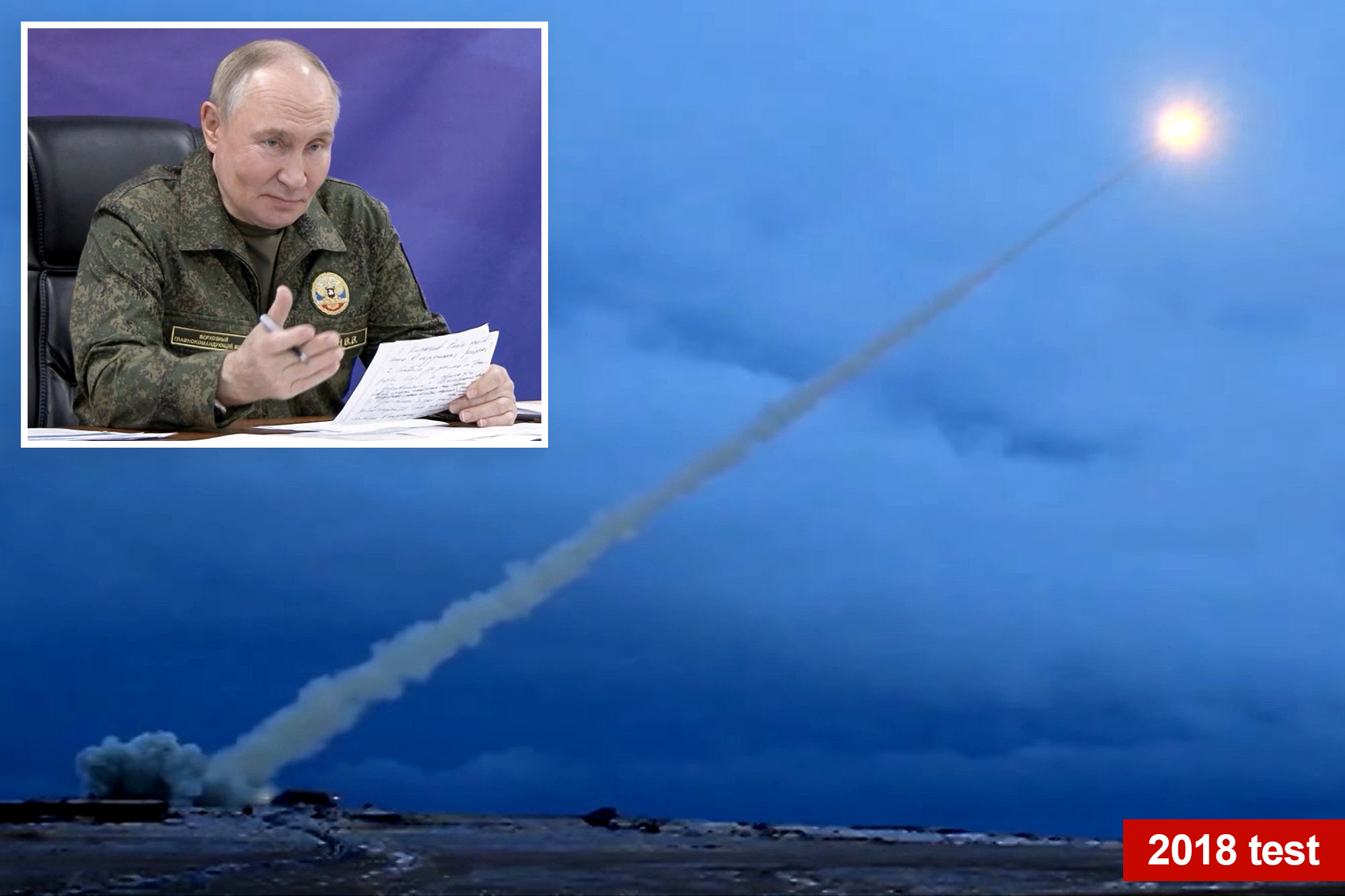World
Putin Announces Deployment Plans for New Nuclear Missile System

Russian President Vladimir Putin announced that the country’s new nuclear-capable cruise missile, known as the Burevestnik, is ready for deployment following a successful test. This statement, made on March 10, 2024, underscores Russia’s ongoing enhancements to its nuclear arsenal amid increasing geopolitical tensions.
In a video released by the Kremlin, Putin, dressed in military fatigues, instructed his military leaders to prepare for the potential deployment of the missile. “We need to determine the possible uses and begin preparing the infrastructure for deploying these weapons to our armed forces,” he stated, emphasizing the importance of readiness in a rapidly changing security environment.
The Burevestnik, which NATO has code-named Skyfall, is portrayed by Putin as an “invincible” weapon capable of evading all existing and future missile defense systems. According to the Russian leader, the missile has a nearly unlimited range and an unpredictable flight path, making it extremely challenging to intercept.
During the announcement, Valery Gerasimov, the chief of the general staff of Russia’s armed forces, reported that the missile was capable of flying for up to 15 hours and could cover approximately 8,700 miles. This range easily allows it to reach major U.S. cities, including New York City and Washington D.C. The implications of this capability are significant, especially with ongoing tensions between Russia and NATO countries.
Information regarding the missile’s test has reached the United States, as noted by Kirill Dmitriev, Putin’s special envoy, who was in the U.S. at the time of the announcement. This development follows a set of nuclear drills earlier in the week, which featured practice launches involving Russia’s vast nuclear-capable missile fleet. The Kremlin claimed these drills encompassed all components of Russia’s nuclear triad, which includes intercontinental ballistic missiles and strategic bombers such as the Tu-95.
Putin has previously indicated Russia’s willingness to utilize its nuclear arsenal against nations supported by nuclear powers, a statement that is perceived as a direct threat to NATO and the U.S. amid the ongoing conflict in Ukraine.
Despite the Kremlin’s assertions regarding the Burevestnik, experts have raised concerns about the missile’s actual capabilities. The Nuclear Threat Initiative advocacy group reports that the missile’s testing history has been less than promising, with only two partial successes recorded out of 13 known tests. Furthermore, a catastrophic incident in 2019 during testing at a naval base in the White Sea resulted in the deaths of five nuclear engineers and two service members due to an explosion.
As Russia continues to bolster its military capabilities, the international community remains watchful of these developments and their potential impact on global security dynamics. The successful test and subsequent deployment plans signal a notable step in Russia’s strategic posture, particularly at a time when tensions with the West are at an all-time high.
-

 Lifestyle3 months ago
Lifestyle3 months agoLibraries Challenge Rising E-Book Costs Amid Growing Demand
-

 Sports3 months ago
Sports3 months agoTyreek Hill Responds to Tua Tagovailoa’s Comments on Team Dynamics
-

 Sports3 months ago
Sports3 months agoLiverpool Secures Agreement to Sign Young Striker Will Wright
-

 Lifestyle3 months ago
Lifestyle3 months agoSave Your Split Tomatoes: Expert Tips for Gardeners
-

 Lifestyle3 months ago
Lifestyle3 months agoPrincess Beatrice’s Daughter Athena Joins Siblings at London Parade
-

 World3 months ago
World3 months agoWinter Storms Lash New South Wales with Snow, Flood Risks
-

 Science3 months ago
Science3 months agoTrump Administration Moves to Repeal Key Climate Regulation
-

 Business3 months ago
Business3 months agoSoFi Technologies Shares Slip 2% Following Insider Stock Sale
-

 Science2 months ago
Science2 months agoSan Francisco Hosts Unique Contest to Identify “Performative Males”
-

 Science3 months ago
Science3 months agoNew Tool Reveals Link Between Horse Coat Condition and Parasites
-

 Sports3 months ago
Sports3 months agoElon Musk Sculpture Travels From Utah to Yosemite National Park
-

 Science3 months ago
Science3 months agoNew Study Confirms Humans Transported Stonehenge Bluestones









